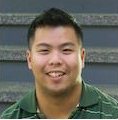 |
|---|
A Glimpse Into the Environment at GM
 By: Simon Guan, PEY
By: Simon Guan, PEY
I started my internship at General Motors at a time of great trouble in the auto industry. Fears of a deep recession were looming, oil prices were climbing, and consumers and banks were tightening up their wallets. These factors caused the sales of vehicles to drop to unprecedented levels. I saw working at GM as a chance to see how a Fortune 500 company would adapt to perilous challenges.
My title at General Motors is the Environmental Support Intern and this job has opened the world of manufacturing to me. The operations of General Motors go beyond just the process of assembling vehicles. To name a few other processes, General Motors also shapes sheets of metal, paints vehicles, and develops product. The sum of GM’s operations represents a profound risk of affecting the environment in four categories: energy consumption, air pollutant emissions, waste generation, and hazardous spills.
The task of the Environmental Department is to minimize the risk and damage in each of these categories. Due to the size of our plant, this task is divided amongst the members of the Environmental Department and for the first five months of my internship, I worked on waste generation and hazardous spills. The Environmental Department has two responsibilities in waste generation, one of which is the reduction of all waste streams. General Motors implements three main strategies to reduce waste: improving processes such as changing a chemical used in painting vehicles to one that generates less sludge, finding new material to recycle that was formerly thrown out such as packaging plastics, and finding new material to recoup or reuse such as x-ray films for their silver. I took part in all three of these strategies: I conducted the research required to find chemicals that will produce less waste and I inspected the plant looking for material that can be recycled, reused, or recouped.
The second responsibility that the Environmental Department has is the compliance to waste regulations. Essentially, these regulations require that the level of hazard of all waste generated to be known. I take part in this first in determining the ingredients either through research or by sampling the waste and sending it to a lab; and second by applying my knowledge of chemistry to determine how hazardous these known ingredients are.
With respect to hazardous spills, the Environmental Department is responsible for the prevention of spills impact and the assessment of the risk of spills impact. General Motors prevents spills through a multitude of measures. The measures include: locking valves that drain the tank to prevent unauthorized use, using tanks that are double-walled, installing impact barriers around the tanks, and installing a concrete box around the tanks.
Despite prevention, releases occur and the Environmental Department has a response team that responds to them. The Department has developed and deployed a procedure so that when a release occurs in the plant, all of the plant staff understands to notify the response team. I have had the opportunity to be a responder and when I receive calls for a release, I go to the source, call in a response crew to clean it up, inspect and close off the storm system if there was a contamination, and report the release to the appropriate internal and external contacts.
In the assessment of the risk of spills impact, I was given an opportunity to do critical analysis. Every proposed chemical and process, before approval, is assessed for its risk of spill. To do this, the chemical or process is evaluated against regulations and policies to ensure that we are allowed to use particular chemicals. In addition, the hazard level and quantity of the chemicals is evaluated to determine its level of risk and if that level is too high, the chemical or process can be rejected.
After five months of support in these two parts of the Department, economic times worsened and General Motors had to take drastic actions to stay afloat. These actions included the reduction of the head counts and many of my acquainted co-workers took retirement packages or were laid off. Everyone remaining in our department had to play bigger roles to cover for the lost personnel. I, too, was asked to take on a bigger role and stepped in as an Environmental Officer for the Truck Assembly Plant. It has been through this role at the Truck Assembly Plant that I have gained clearer insight into my career path.
As an Environmental Officer, my environmental role changed considerably. Before, I would provide support for anyone in the Department and oversaw indirectly waste and spill activity. My previous role as an Environmental Support Intern was like an assistant manager of a hockey team. I would perform administrative duties that helped create an environment where the workers can attain set Environmental goals. An assistant manager of a hockey team also performs administrative duties, so that the right tools are present for the players to win games with. My role now as an Environmental Officer is more like the team coach; I interact with the players a lot, constantly communicating, motivating, and convincing them to play their part and I ultimately hold the responsibility of ensuring that each and every player helps win games.
Being an Environmental Officer has given me the responsibility of enforcing environmental work instructions and policies that GM has set forth for each worker in the company. I am armed with several tools, one of which is the authority to report individuals who are not performing their task to their superiors. However, threatening individuals to perform their task is not an ideal way of coaching an individual to be motivated to accomplish a goal. In order to best motivate someone to genuinely become environmental consciousness, I have found that persuasion serves as the most effective tool.
My supervisor always says: “If I can convince one person that they should be environmentally conscious, then it has been a productive day.” Being a member of the environmental profession means more that just simply attaining a goal for one year, two years, or even one hundred years. The way people look at the world has to change and it is the responsibility of the environmental profession to do this. My job in this profession extends further than simply helping General Motors accomplish its environmental goals; it is about changing of the mindset of the workers who at the end of the day are global citizens. If the nature in which people think about recycling changes from being something extra to being something standard, landfills at capacity would not be a problem. If the nature in which people think about air pollution changes from being something tolerable to being something impermissible, climate change would not be a problem. Changing how things are perceived is the key to changing the world.
In many ways, the biggest paradigm shifts in the world are brought about by the smallest of actions. Rosa Parks simply refused to give her seat up and Thomas Edison simply found a longer lasting filament to be used in the vacuum glass bulb. The work that I do as an Environmental Officer is the basis for all environmental change because ultimately it starts with convincing people. All drivers of change are ignited by demand from the people. The fundamental principle of economics is based on demand from the people. Policies and laws are passed because it is what the people want. I strive to change environmental awareness and action from being something extra to being something standard. To accomplish this daunting task, I will start small. I hope that by first convincing at least one person every day to be environmentally conscious, I can accomplish this task one small step at a time.